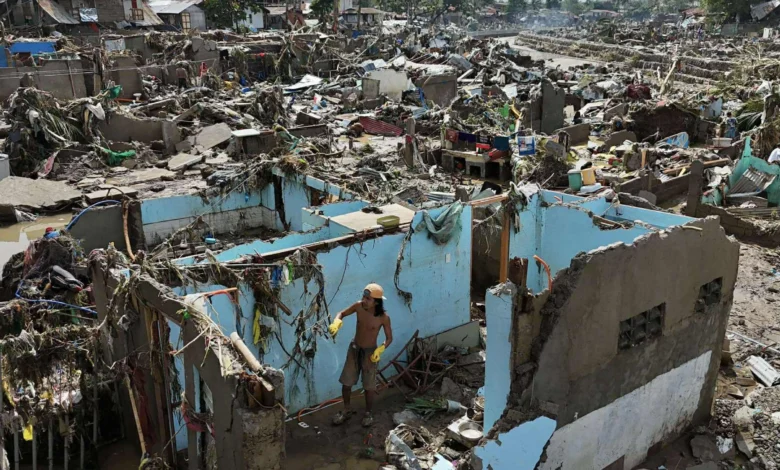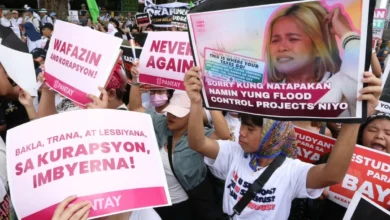
Cebu Floods: When Greed Becomes a Killer
Cebu is drowning, not only in floodwater but also in years of corruption. When Typhoon Kalmaegi (local name “Tino”) struck the province this November, it claimed hundreds of lives, with many still missing and the toll expected to rise. Billions had been spent on flood-control projects. Everyone knows where the money went. It built mansions while homes downhill sank.
The Floods Took Everything
The aftermath was catastrophic. Streets turned into torrents, cars floated like paper boats, and families clung to rooftops or bridges, praying for rescue. While the storm’s intensity was extreme, the system’s failure to protect the people magnified the destruction.
Residents shared the grim reality online. Ordinary heavy rains no longer caused this level of flooding. Previously, waters would drain within hours. This time, water lingered, exposing inadequate rivers and drainage channels clogged with silt, debris, and construction. One resident wrote, “The carrying capacity of our rivers is gone. The rivers have been rendered inutile.”
This is the Cost of Corruption
Cebu has received at least ₱26.7 billion for flood-control projects over the past decade, including 414 projects completed or underway since 2022. Yet when Tino struck, the infrastructure failed.
Investigations reveal systemic problems. Projects were poorly designed, substandard, or abandoned halfway. Cebu’s flood-control budget was implemented through QM Builders, a company led by Allan Quirante. One contractor handled nearly a quarter of all the province’s flood-control contracts between 2022 and 2025. Existing structures were poorly maintained and inadequately supervised.
Disaster response has become a business, it seems. The public continues to bear the consequences of mismanagement.
Mountains Meant to Protect, Carved for Profit
Much of Cebu’s flooding begins in its mountains. Historically, uplands served as natural catchments, absorbing rainfall and slowing runoff. Recently, quarrying and construction have dramatically altered these watersheds. Hillsides have been carved for roads, luxury subdivisions, and other developments, reducing the land’s capacity to hold water.
The Rise at Monterrazas, a luxury hillside development, has become a focal point of public anger. Built on a steep slope, it exemplifies how private projects prioritize views and profits over public safety. Every slope flattened and every forest cleared sends more water rushing into low-lying communities during storms.
Ongoing quarrying strips soil and rocks from hills, destroying the natural absorption of rainfall. This accelerates runoff, overwhelms rivers, and worsens flooding in both urban and rural areas.
Cebu Governor Pam Baricuatro publicly expressed outrage over the floods, saying the tragedy “did not have to happen” and urging accountability for lapses in watershed management, quarrying oversight, and environmental safeguards. She called for answers on issues ranging from unaddressed Central Cebu Protected Watershed concerns to quarry permits and inter-office disputes, emphasizing that leadership must act decisively to protect communities.
How Much Longer Will Greed Drown People?
Residents in barangays such as Guadalupe and Tisa were among the hardest hit by the flooding. One resident described the water rising so fast that by early morning people could barely escape their homes. Families climbed onto rooftops to wait for rescue as emergency services struggled to respond amid streets filled with debris and floating vehicles.
The Philippine Red Cross reported receiving countless calls from residents trapped in their homes or stranded on rooftops, with some areas impassable due to the fast-moving floodwaters. Many survivors recounted that rebuilding would take months, adding to the emotional toll of the disaster.
This is the human cost of systemic failure. The floods exposed longstanding weaknesses in infrastructure, flawed flood-control projects, and the risks posed by unregulated upland development and quarrying.
READ: Engineers of Corruption: Like Father, Like Son
Who Will Be Held Accountable?
Cebu’s floods were not just a natural disaster. They were a human-made tragedy, the result of mismanaged funds, flawed infrastructure, and unchecked development. Families lost homes, livelihoods, and loved ones while contractors and developers prospered.
The waters may recede, but when will those responsible for years of neglect and corruption answer for the lives lost and communities destroyed? Every storm will bring the same deadly consequences unless those who exploit taxpayers are held accountable.
Cebu’s suffering is far from over. It demands more than sympathy. It demands transparency, accountability, and governance that truly protects the people.




